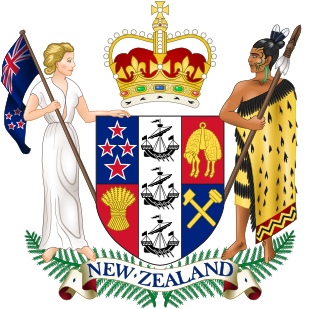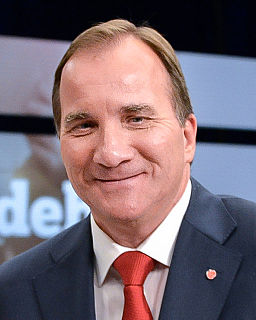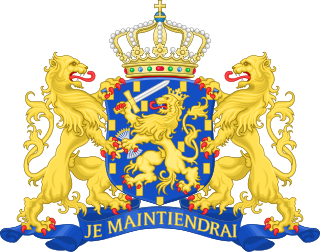
The prime minister of Australia is the head of government of the Commonwealth of Australia. The individual who holds the office is the most senior minister of state, and the leader of the federal Cabinet. The prime minister also has the responsibility of administering the Department of the Prime Minister and Cabinet, and is the chair of the National Security Committee and the Council of Australian Governments. The office of prime minister is not mentioned in the Constitution of Australia but exists through Westminster political convention. The individual who holds the office is commissioned by the governor-general of Australia and at the governor-general's pleasure subject to the Constitution of Australia and constitutional conventions.

The prime minister of New Zealand is the head of government of New Zealand. The incumbent prime minister, Jacinda Ardern, leader of the New Zealand Labour Party, took office on 26 October 2017.

The Prime Minister is the head of government in Sweden. Before the creation of the office of a Prime Minister in 1876, Sweden did not have a head of government separate from its head of state, namely the King, in whom the executive authority was vested. Louis Gerhard De Geer, the architect behind the new bicameral Riksdag of 1866 that replaced the centuries-old Riksdag of the Estates, became the first officeholder in 1876.

The Prime Minister of Norway is the head of government of Norway and the most powerful person in Norwegian politics. The Prime Minister and Cabinet are collectively accountable for their policies and actions to the monarch, to the Storting, to their political party, and ultimately the electorate. In practice, since it is nearly impossible for a government to stay in office against the will of the Storting, the prime minister is primarily answerable to the Storting. The prime minister is almost always the leader of the majority party in the Storting, or the leader of the senior partner in the governing coalition.

Prime Minister is the current title of the head of government of Portugal. As head of government, the Prime Minister coordinates the actions of ministers, represents the Government of Portugal to the other bodies of state, is accountable to Parliament and keeps the President informed. The Prime Minister can hold the role of head of government with the portfolio of one or more ministries.

The Prime Minister of Finland is the leader of the Finnish Government. The Prime Minister is Finland's head of government and is formally appointed by the President of Finland. Finland's first Prime Minister was Pehr Evind Svinhufvud, who was appointed to the post on 27 November 1917.

The Prime Minister of the Government of Romania is the head of the Government of Romania. Initially, the office was styled President of the Council of Ministers, when the term "Government" included more than the Cabinet, and the Cabinet was called The Council of Ministers. The title was officially changed to Prime Minister by the 1965 Constitution of Romania during the communist regime.

The Prime Minister of the Netherlands is the head of the executive branch of the Government of the Netherlands in his capacity as chair of the Council of Ministers. The Prime Minister is de facto the head of government of the Netherlands and coordinates its policy with his cabinet. The current Dutch Prime Minister is Mark Rutte, in office since 2010.

The President of the Council of Ministers of the Italian Republic, commonly referred to in Italy as Presidente del Consiglio, or informally as Premier and known in English as the Prime Minister of Italy, is the head of government of the Italian Republic. The office of Prime Minister is established by Articles 92 through to 96 of the Constitution of Italy. The Prime Minister is appointed by the President of the Republic after each general election and must have the confidence of the Italian Parliament to stay in office.

The prime minister of Croatia, officially the president of the Government of the Republic of Croatia, is Croatia's head of government, and is de facto the most powerful and influential state officeholder in the Croatian system of government. Following the first-time establishment of the office in 1945, the 1990–2000 semi-presidential period is the only exception where the president of Croatia held de facto authority. In the formal Croatian order of precedence, however, the position of prime minister is the third highest state office, after the president of the Republic and the speaker of the Parliament.

The Prime Minister of Egypt is the head of the Egyptian government.

The Prime Minister of the Republic of Tunisia is the head of government of Tunisia. The prime minister directs the executive branch along with the president, and, together with the Prime Minister's cabinet, is accountable to the chief of state, to the Assembly of the Representatives of the People, to the prime minister's political party and, ultimately, to the electorate for the policies and actions of the executive and the legislature.

The prime minister of the Lao People's Democratic Republic is the head of government of Laos. It is the highest office within the Central Government.
This page is based on this
Wikipedia article Text is available under the
CC BY-SA 4.0 license; additional terms may apply.
Images, videos and audio are available under their respective licenses.












